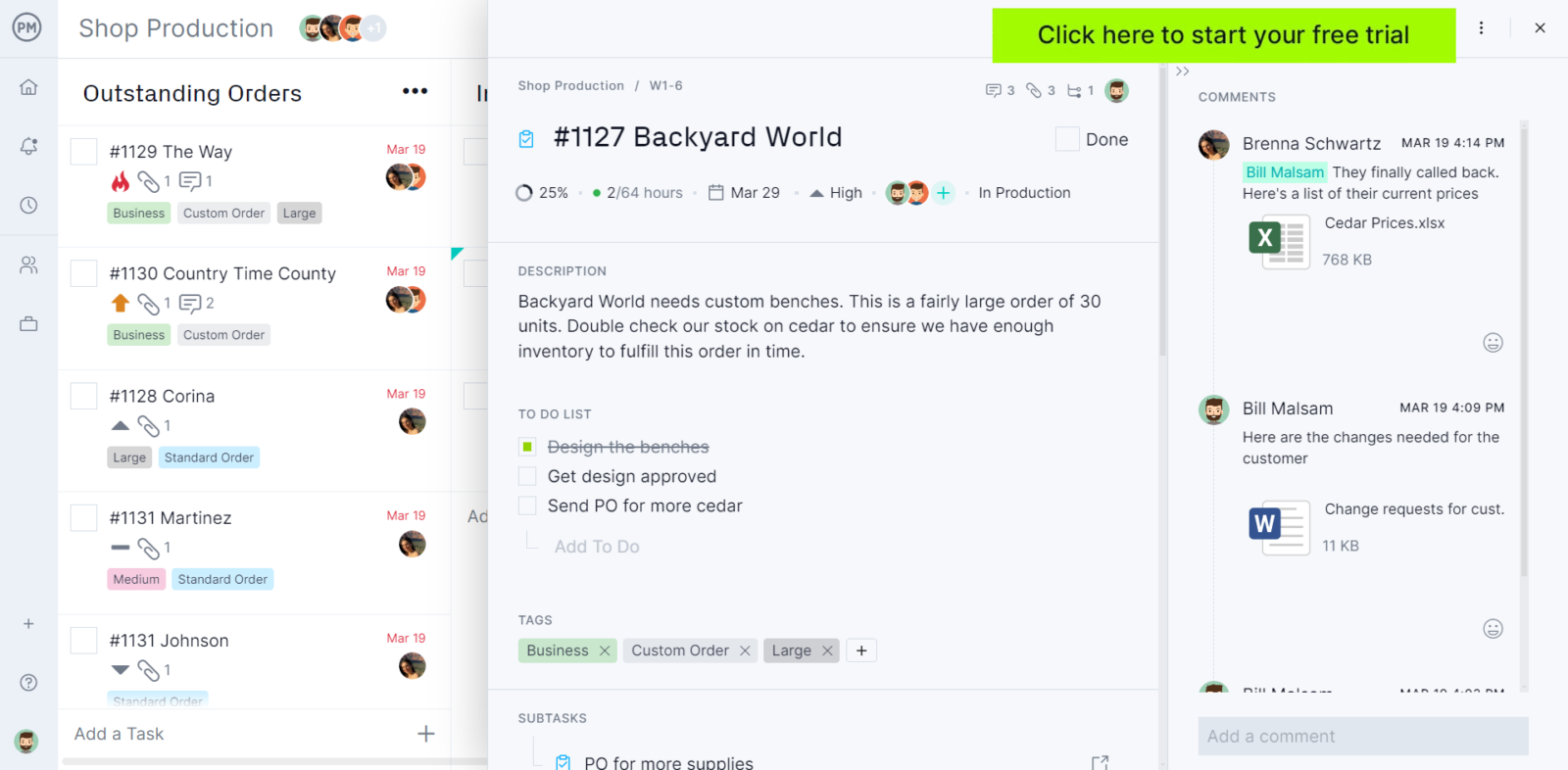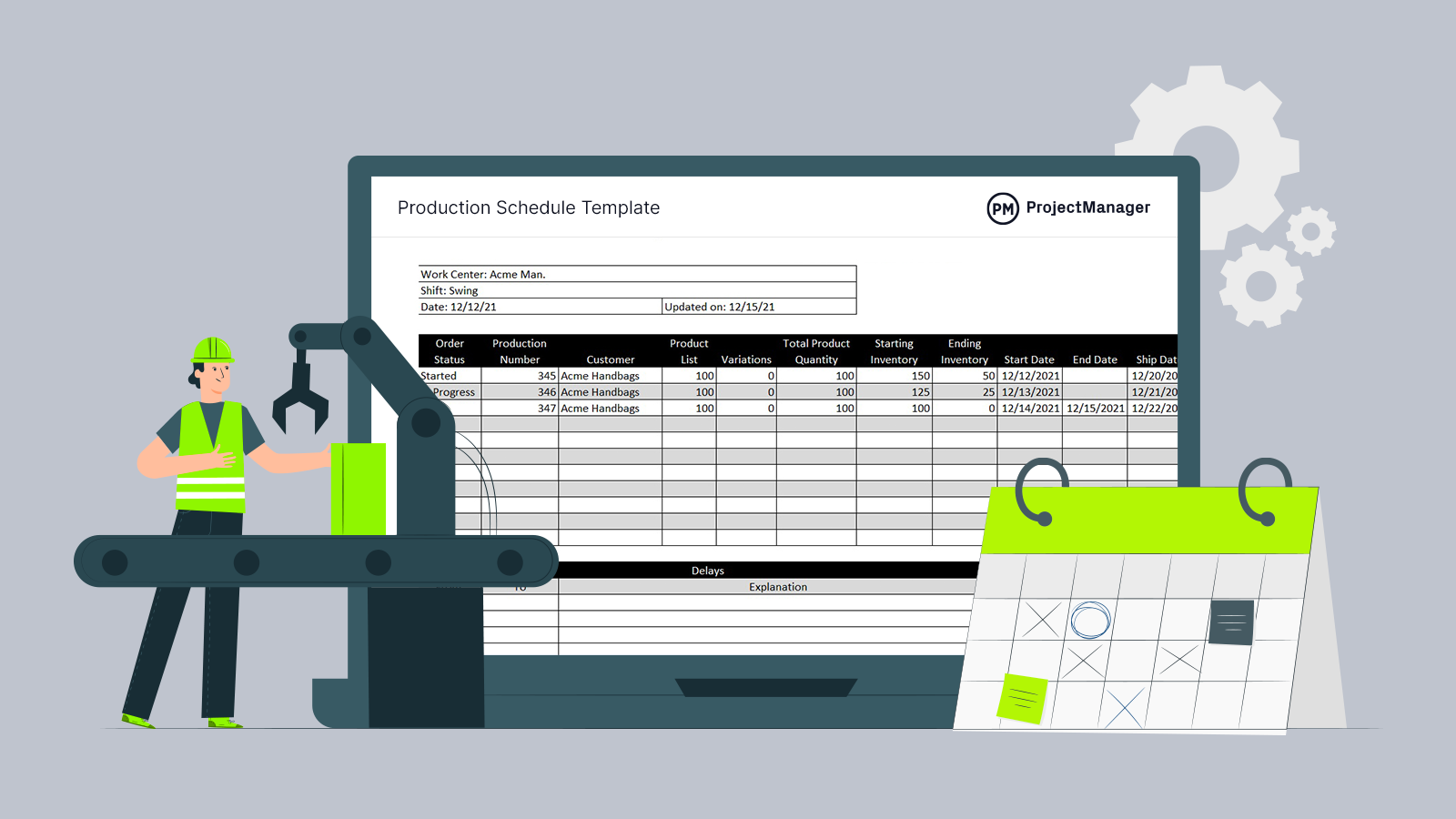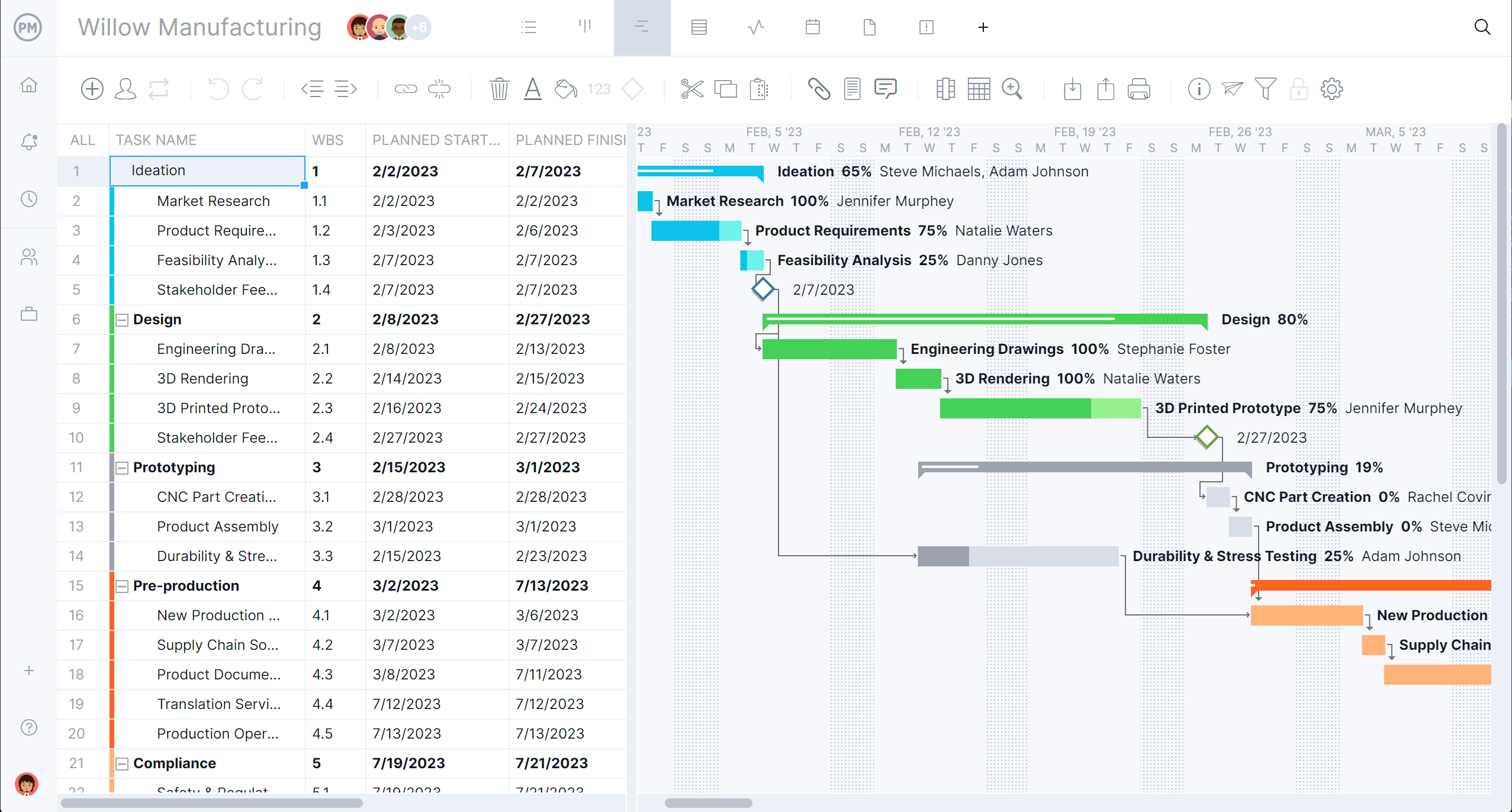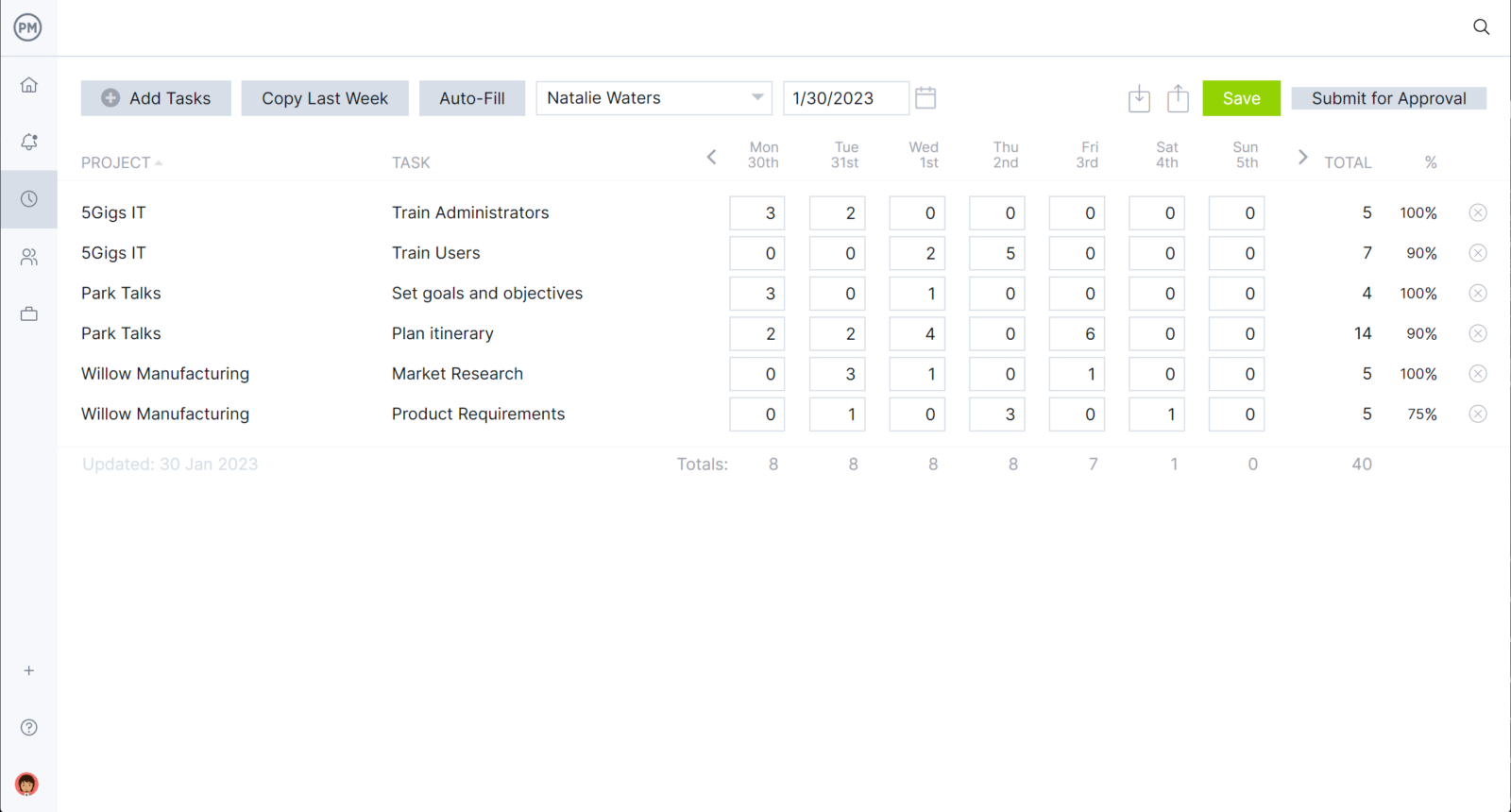Everything you need for your manufacturing process is a resource—people, materials, equipment, software, facilities, etc. Whatever you’re making, you need to manage those resources to do it.
That process is called manufacturing resource planning (MRP II), and it’s a method used to work more effectively. When needing precise coordination of resources to get the work done on time and within budget, you’ll need to create an MRP system.
What Does MRP Stand For in Manufacturing?
But why is it called MRP II or MRP 2? Well, that’s because in manufacturing, MRP stands for two important information systems that allow manufacturers to manage their production inventories and keep their manufacturing operations running, materials requirements planning (MRP I) and Manufacturing resource planning (MRP II).
Let’s take a closer look at both approaches to learn when to use them and what their main benefits are.
What Is Materials Requirements Planning (MRP I)?
Materials requirements planning (MRP I) is a type of resource planning used to control inventory, get data on customer demand and solidify a bill of materials for a product. You use that information to create a purchasing plan and production schedule.
When it was first developed, the data exclusively centered on the necessary goods and their quantities. That approach expanded to include other data points (such as sales forecasts) to create better production and purchasing schedules.
What Is Manufacturing Resource Planning (MRP II)?
Manufacturing resource planning (MRP II) is the process of creating an MRP system that allows manufacturers to account for the raw materials and human resources needed for their manufacturing process. MRP II touches on operational and financial planning but also explores contingency planning that creates additional paths forward when issues arise.
There’s no proprietary software associated with manufacturing resource planning, and therefore, many solutions are offered. However, almost all manufacturers use some software to create an MRP system. You may use just one platform for all your manufacturing resource planning needs, or you can also build your own system by acquiring multiple software solutions.
Project management software can organize manufacturing and manage resources. ProjectManager is online software that helps with production scheduling, resource planning, tracking and reporting. No project management software does more for manufacturing teams. Use the kanban board to create and visually track various processes and centralize work for your manufacturing team. Try ProjectManager for free today.

What Is an MRP System?
An MRP system is a software platform that allows manufacturers to collect and analyze all the data from their production process and have it reside in a single place. This helps managers with production planning, inventory planning, raw materials purchasing and purchase scheduling.
The goal of a manufacturing resource planning system is to allow you to collect, store and analyze information to help you avoid issues like resource overallocation, production inventory shortages or or overstocking. It also helps plan all the manufacturing activities, including procurement, production and delivery.
How to Create an MRP System
When creating an MRP system, three key resource management and manufacturing process inputs are necessary:
- The master production schedule (MPS): The MPS is the number of end goods and the time you’ll produce them. Estimate this by looking at your customer orders and demand forecasts.
- The inventory status file (ISF): The ISF is the real-time data on your inventory. It lets you know what you have in stock and where it’s currently warehoused, providing a picture of the overall status of your inventory.
- The bill of materials (BOM): The BOM lists all the raw materials, components and anything else necessary to manufacture or repair your product or service.
- Shop Floor Management: You need a system that allows you to monitor the activities that occur on the production floor and track manufacturing KPIs
- Order Management: An MRP II needs order fulfillment functionality, which allows you to receive customer purchase orders, send sales orders back to them and track their production, shipping and delivery.
- Cost Management & Accounting: When choosing a manufacturing resource planning software, look for one that allows you to track the costs of direct materials and labor used in the production process, as you’ll need to include those in financial statements.
- Production Capacity Planning: You’ll need to manage human resources and also capital assets such as machinery so you need software that allows you to know which of those resources are available at any time.
These inputs show you the raw materials available for production and when you need them. Then, the manufacturing resource plan can help you keep the lowest number of materials on hand while planning and scheduling manufacturing activities.
And that’s only the beginning! There are other tools for business planning, tool management, sales analysis and project management. MRP II integrates many manufacturing processes so you can organize and manage them.

Get your free
Production Schedule Template
Use this free Production Schedule Template for Excel to manage your projects better.
MRP I vs. MRP II
The main difference between these two types of manufacturing information management systems is that manufacturing resource planning software (MRP II) includes all the features from a material requirements planning (MRP I) system described above as well as other tools. MRP II takes master production scheduling, bill of materials and inventory control functionality from MRP I and provides additional features such as demand forecasting, accounting, quality control and production capacity planning.
MRP II vs. ERP
Enterprise Resource Planning (ERP) is a version of MRP that adds to the planning of all enterprise-related activities. While MRP I and MRP II help analyze information that’s related to the production process of a manufacturing business, ERP takes a more holistic approach. An ERP system allows you to manage almost every bit of data generated by your business.
It does what an MRP I and MRP II system will do and adds more functionality such as invoicing, customer relationship management (CRM), human resources, asset management, supply chain management and project management.
MRP I vs. MRP II vs. ERP
Here’s a comparison table that allows you to quickly compare the functionality of MRP I, MRP II and ERP. We’ve included most of their features and their corresponding acronyms so you can familiarize yourself with the terminology from these systems.
| Material Requirements Planning (MRP I or MRP 1) | Manufacturing Resource Planning (MRP II or MRP 2) | Enterprise Resource Planning (ERP) |
| Master production scheduling (MPS) | All features from MRP I | All features from MRP I and MRP II |
| Bill of materials (BOM) | Shop floor control (SFC) | Invoice & payment processing |
| Inventory management | Production capacity planning | Enterprise asset management |
| Purchasing and procurement | Demand forecasting and planning | Order fulfillment and management |
| Production order processing | Quality assurance and control | Customer relationship management (CRM) |
| General accounting | Human resources management (HRM) | |
| Cost tracking | Supply Chain Management (SPM) | |
| Production routing | Payroll processing |
Why Is Manufacturing Resource Planning Important?
Manufacturing resource planning allows for a more productive and tight production schedule that keeps costs low. But, it also provides valuable data from the production floor you can use to address issues that slowed down manufacturing in the past—so you don’t repeat it in the future.
There’s also a workload reduction that results in greater efficiency when you apply resource planning. The data you collect helps you plan and make more accurate production cost estimates that lead to greater profitability for the company.
In the past, stock control and management were the only tools manufacturers had to run efficiently. Manufacturing resource planning is far more effective in managing resources and making more effective plans. Its use saves the company money, time and labor.
Key Benefits and Advantages of MRP II
Implementing an MRP II is beneficial for any manufacturer no matter its size or specific details about its production process. Here are some key benefits that MRP II can bring to an organization.
Helps Organizations Balance Capacity and Demand
One of the advantages of choosing an MRP II system over MRP I is that it uses demand forecasting features, which help estimate future customer demand for products based on past data to gauge the production volume that will need to be manufactured and compare that to a production capacity.
Guides Capital Budgeting and Improvement Decisions
Having an MRP II system to track all your production dates is important whenever you’re making capital planning and budgeting decisions, such as purchasing additional machinery, equipment, capital assets or any other organizational resources used for the production process.
Facilitates Production Optimization
One of the biggest challenges that manufacturing companies face is constantly striving to improve their production process to make it more efficient.
This process is known as production optimization, which consists of making adjustments such as redesigning the shop floor plan, redistributing the workload among production line workers and other changes to produce goods faster at a lower cost to improve the productivity and profitability of a manufacturing process.
Free Production Schedule Template
It’s important to understand how manufacturing resources will impact the production schedule. To help streamline the process, download this free production schedule template for Excel. Use it to track total product quantities, production dates, inventory and more.
Related: 10 Free Manufacturing Excel Templates

How to Make a Manufacturing Resource Plan
When creating a manufacturing resource plan, ask yourself three questions: what is needed? How much is needed? And when is it needed? Working backward from the finished product is how you start to assemble the materials you’ll need for a manufacturing resource plan.
You can break down the process of manufacturing resource plans into four basic steps:
- Make estimates of the demand for your product: From there, you can figure out the resources necessary to have your supply meet that demand. Those resources are broken down by a bill of materials, which is the list of raw materials, assemblies and other components necessary to manufacture your end product. Don’t forget to include your personnel in this estimate, as they’re also resources.
- Compare demand to current inventory: This will inform how many resources you need to meet demand, on top of what you already have in stock. Manufacturing resource planning allocates the inventory where it’s needed.
- Create a production schedule: That means figuring out how much time each step in your manufacturing process will take. Again, you work backward from a deadline.
- Monitor the entire process: Make sure that you’re meeting milestones and not going over the budget. Most manufacturing resource planning software will have notifications that alert you if things are going off-track. If this occurs, have a contingency plan in place.
Manufacturing Resource Planning Best Practices
Manufacturing resource planning lives or dies on the accuracy of its data. Therefore, the most important tip for anyone making a manufacturing resource plan is to have data integrity. That includes looking at everything from your inventory to dates, lead times, yield and forecasting.
It’s also important to stay flexible and patient. There’s a lot of data for you to digest, and this can take some time—even under the best circumstances. This is especially true if you’re just beginning to use manufacturing resource planning, which is very data-based. It can be a bit of a transition for those working on more of a gut level.
Find the right software to help you manage your manufacturing resource planning. You’ll want to shop for a tool that meets your needs, as not all manufacturing businesses operate the same way. Make sure the software you pick delivers real-time data and has the resource management features to match capacity with demand.

How ProjectManager Helps Manufacturing Resource Planning
ProjectManager is online software that provides real-time data for better monitoring your production and inventory. ProjectManager lets you organize, plan and report on the progress and performance of your manufacturing. We even have timesheets to simplify payroll.
Create Master Schedules on Gantt Charts
Coordinating resources, creating a workable schedule and staying on budget are the three pillars of manufacturing resource planning. ProjectManager does all three in one robust Gantt chart view. You can set resource costs, assign teams, and set milestones and deadlines to avoid delays on the production line.

Track Progress At a Glance With Real-Time Dashboards
To further monitor your progress, ProjectManager has a live dashboard that delivers real-time data, so you know immediately if your team’s workload is imbalanced and if tasks are taking too long or costs are skyrocketing. For a deeper dive into the data, there are one-click reports that you can filter to show just the information you want. You can share reports to update the leadership team on what’s happening on the manufacturing floor.

Track and Adjust Team Workloads
Don’t forget your workers are resources, too, and you need to plan and manage their workload to keep them working at capacity. ProjectManager’s resource management tools have a workload chart that’s color-coded, so you can see at a glance whether someone has too much work or too few tasks. Then, from the chart, reallocate their assignments and balance the workload to help everyone work more productively.

Track Time Easily and Effectively
Another way to keep track of the work being done on the manufacturing floor is with timesheets. These secure documents lock when sent for approval and can be auto-filled or repeated last week’s assignments if applicable. But they don’t just streamline and add security to the payroll process, they can also show managers how much time each worker spends on their tasks. It’s another tool to tighten production and get the most out of your resources.

ProjectManager is award-winning software that helps with manufacturing resource planning while giving you the project management tools you need to monitor and report on your progress and performance. Keep your production on schedule and have the resources to match your capacity by trying ProjectManager for free today!

